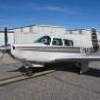Low power settings on Rocket?
-
Members Online
- Fritz1
- Flyler
- Mooney in Oz
- LANCECASPER
- toto
- Jft1025
- takair
- Parker_Woodruff
- flewmanchu
- Van Lanier
- ElkoRandy20J
- DC_Brasil
- Rmnpilot
- Aaviationist
- portmod7
- mooniac58
- KSMooniac
- Danb
- NewMoon
- Jake@BevanAviation
- Blaze
- MDMooney
- Max Clark
- Raistlin
- IvanP
- sdmideas
- YeloSub
- Scopes
- 1980Mooney
- DanM20C
- alextstone
- Webs
- atpdave
- bcg
- jetdriven
- Marc_B
- NickG
- Av8rjm
- Rwsavory
- 802flyer
- TCC
- Andy95W
- redbaron1982
- jamesyql


Recommended Posts
Join the conversation
You can post now and register later. If you have an account, sign in now to post with your account.